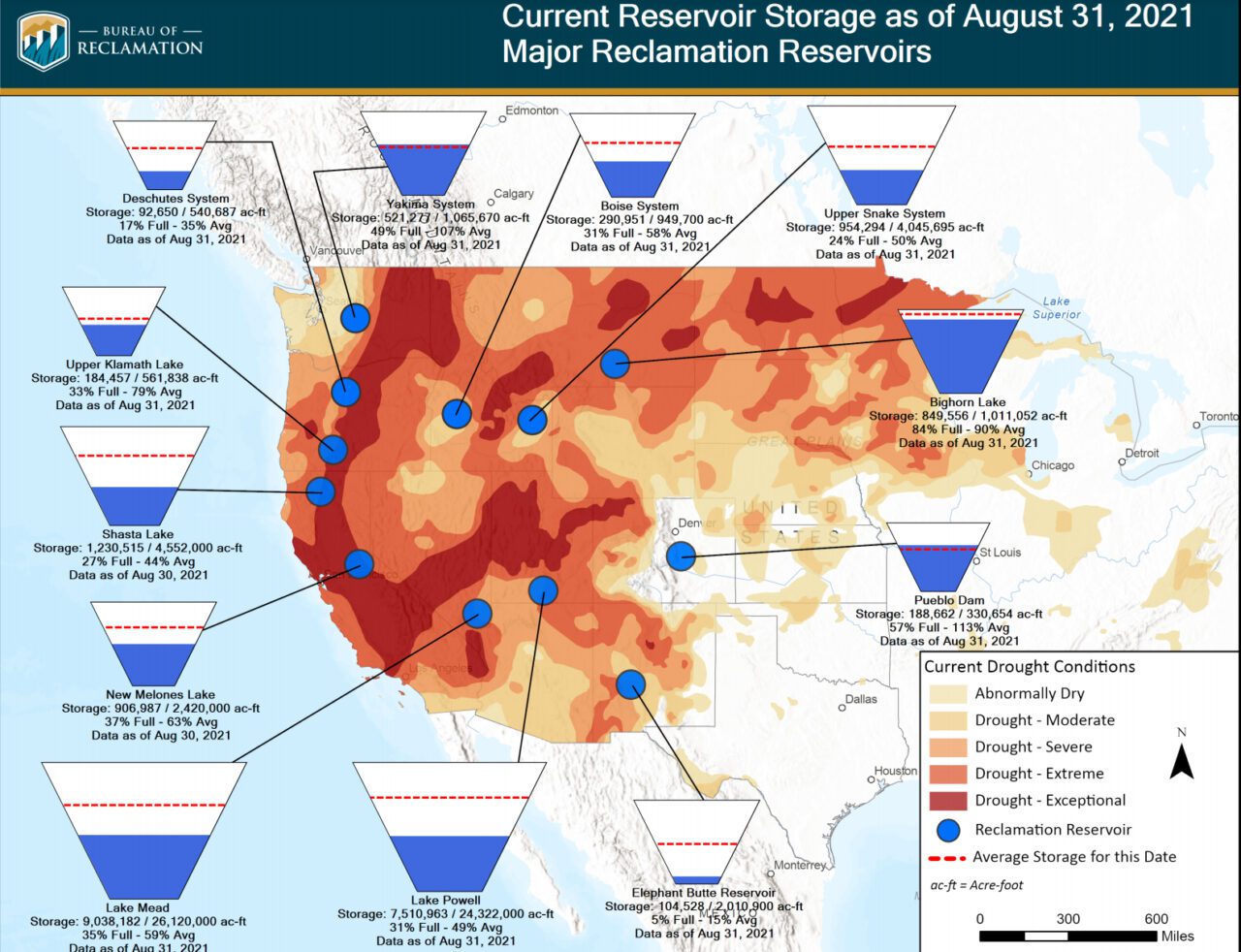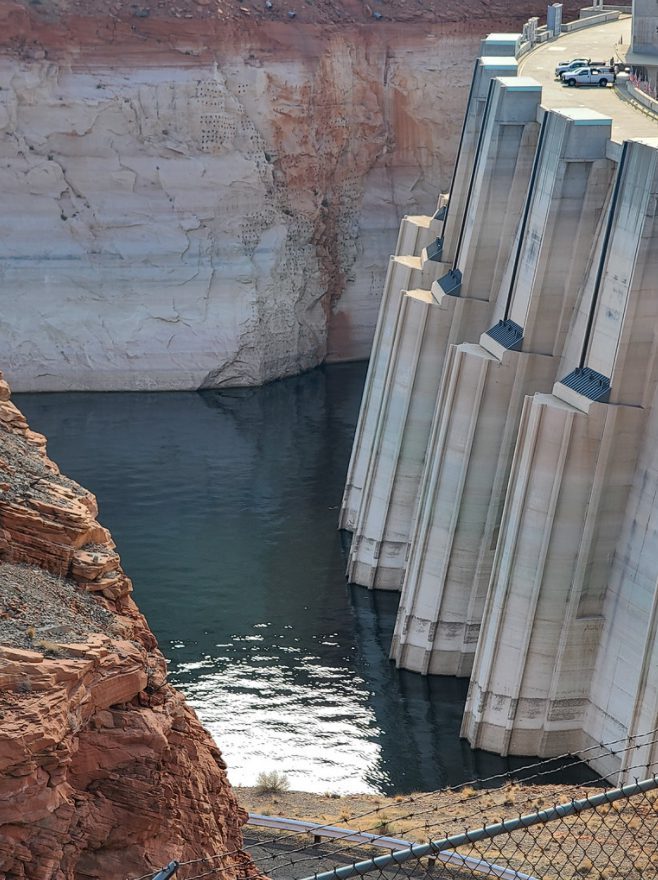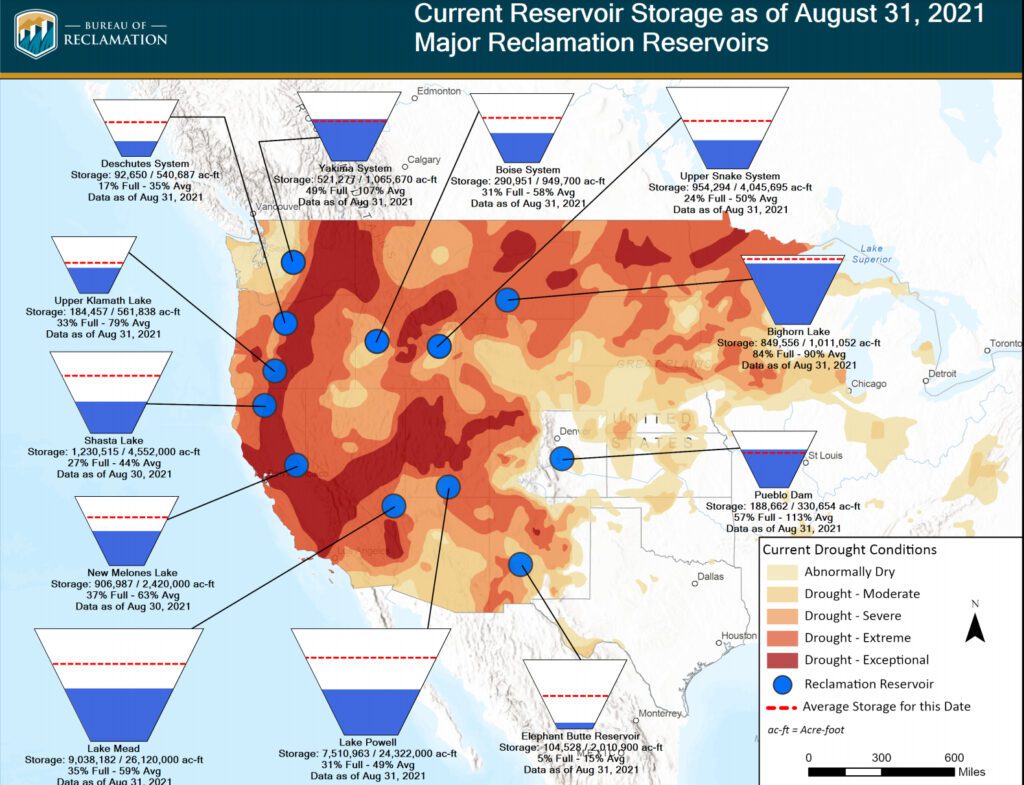Drought-Crippled Hoover Dam, Glen Canyon Hydropower Plants Operating at Substantially Decreased Capacity
The post Drought-Crippled Hoover Dam, Glen Canyon Hydropower Plants Operating at Substantially Decreased Capacity appeared first on POWER Magazine.

The iconic 2-GW Hoover Dam and 1.3-GW Glen Canyon Dam hydropower plants are operating at substantially reduced capacity, paralyzed by enduring drought conditions across the West, the U.S. Bureau of Reclamation (USBR) has revealed.
Weeks after USBR on Aug. 16 declared the first-ever federal water shortage at Lake Mead, the agency told POWER this week that deteriorating storage levels at the Colorado River's largest reservoir are posing hurdles for power production from Hoover Dam. The situation could have new implications for Los Angeles and other parts of Southern California, Arizona, and Nevada, which take the bulk of the allocated firm energy that the plant produces.
Lake Mead is at its lowest level since being filled, resulting in a decrease of about 25% of Hoover Dam's generating capacity," Rob Manning, chief of USBR's Public Affairs, said on Monday. While Hoover's normal capacity is 2,074 MW, it's currently 1,567 MW. And while the dam needs a power pool minimum elevation of 950 feet to produce power (with an expected capacity of 650 MW), Lake Mead's elevation as of Aug. 31 was 1,067.96 feet, he said.
At Lake Powell's Glen Canyon Dam, which straddles the Arizona-Utah border, conditions were even graver. The lake is also at the lowest level since being filled," Manning said. That has resulted in a decrease of about 41% for Glen Canyon Dam's generating capacity. Glen Canyon Dam's normal capacity is 1,320 MW; it's currently 870 MW. Every foot of lake level decline means about 3 MW of lost capacity. Elevation 3,490 feet is minimum power pool, the lowest elevation Glen Canyon Dam can produce power," he explained. Lake Powell's elevation as of Aug. 30 was 3,549.19 feet.
Glen Canyon maintains about 30 MW of generation capacity in reserve to respond to a system emergency even when generation rates are high, USBR has noted. Depending on the severity of the system emergency, the response from Glen Canyon Dam can be significant, within the full range of the operating capacity of the power plant for as long as is necessary to maintain balance in the transmission system," it said. In July, the agency began delivering (in efforts that are slated to continue until December 2021) an additional 181,000 acre-feet to Lake Powell to combat its decreasing hydrology.
 This photo shows the Glen Canyon Dam on Aug. 8, 2021. Source: USBR
This photo shows the Glen Canyon Dam on Aug. 8, 2021. Source: USBR
For now, USBR's California hydropower reservoir water levels are expected to remain above power pool minimums throughout the remainder of 2021, including at the 663-MW Shasta power plant at Shasta Dam and the 162-MW Folsom plant at Folsom Dam, Manning said. However, the drought has caused challenges in managing river temperatures for fish on the Sacramento and American Rivers," he said. In April and May, Reclamation conducted a warm water bypass at Shasta Dam Powerplant to preserve cold water for endangered species, and we are currently evaluating requests from the fishery agencies for smaller cold-water bypasses at Shasta and Folsom power plants this fall."
USBR noted that drought conditions are affecting most of the 11 western-most states where the agency operates. More than half of the region faces D3 or D4 levels of drought-the two most severe levels defined by the U.S. Drought Monitor (USDM). Several other USBR reservoirs are facing low storage levels, according to Aug. 31 data from the agency.
 Current Bureau of Reclamation reservoir storage as of Aug. 31, 2021. View more data at the Bureau of Reclamation's interactive reservoir storage status map, providing conditions for 44 major Reclamation reservoirs and comparisons with historical storage data. Source: USBR
Current Bureau of Reclamation reservoir storage as of Aug. 31, 2021. View more data at the Bureau of Reclamation's interactive reservoir storage status map, providing conditions for 44 major Reclamation reservoirs and comparisons with historical storage data. Source: USBR
USBR has said the current drought is largely driven by below-average precipitation across much of the West, coupled with consistently above-average spring temperatures that have persisted into the summer months. Its effect on runoff water supply has been devastating. Except for portions of the Columbia River Basin, most basins are significantly below average," it said. This is unlikely to change substantially as the runoff season has largely concluded."
-Sonal Patelis a POWER senior associate editor (@sonalcpatel,@POWERmagazine).
The post Drought-Crippled Hoover Dam, Glen Canyon Hydropower Plants Operating at Substantially Decreased Capacity appeared first on POWER Magazine.